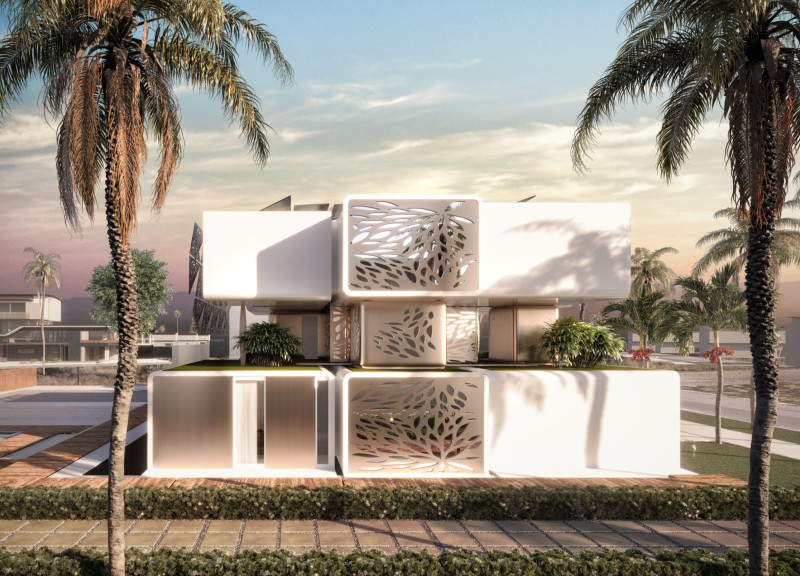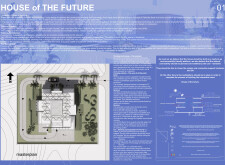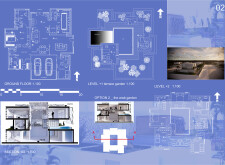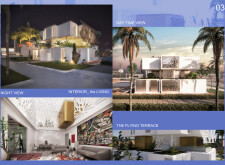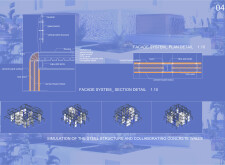5 key facts about this project
### Overview
The House of the Future is situated within an adaptable urban or suburban context, designed to blend cutting-edge technology with sustainable practices. It aims to create a living environment that emphasizes environmental stewardship, flexibility, and enhanced user experience. The architectural approach prioritizes the integration of indoor and outdoor spaces, fostering a lifestyle that encourages interaction with both natural and social environments.
### Spatial Configuration and User Experience
The architectural layout features a centralized open space, referred to as the void, surrounded by designated functional zones including living, dining, and service areas. The ground floor strategically allocates essential spaces, seamlessly connecting the kitchen, pantry, and dining areas. A notable design element includes a terrace garden and swimming pool on the first level, promoting leisure and extending the living space into nature. Additional outdoor features, such as the "flying terrace," provide multifunctional areas that enhance visual connectivity and social engagement. The interiors, characterized by tall ceilings and large windows, prioritize comfort and airiness, utilizing natural materials in conjunction with contemporary furnishings to create a cohesive atmosphere.
### Material Selection and Technological Integration
Material choices in this project reflect a dual focus on aesthetic appeal and functionality, contributing significantly to energy efficiency. Key materials include cement board for structural durability, rock wool for thermal insulation, and EPS panels for lightweight energy conservation applications. The use of HEA 200 S233 steel ensures structural integrity while allowing for versatile design options. Noteworthy is the dynamic facade system, which facilitates environmental interaction through shading and natural light penetration. This approach minimizes energy consumption by leveraging passive design principles. Additionally, the integration of smart technology within the home enables residents to monitor and manage energy usage, promoting a user-centric environment that encourages responsible consumption and sustainable living practices.


